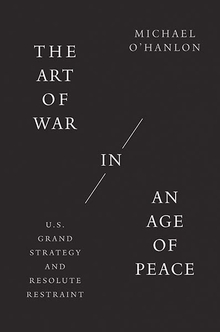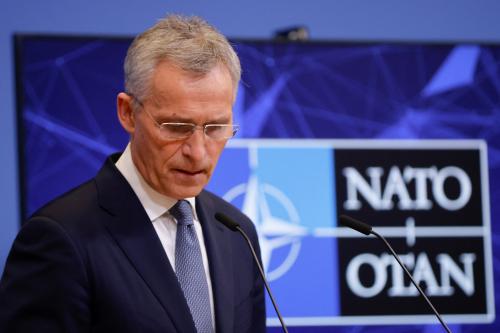EXECUTIVE SUMMARY
With Russia’s invasion of Ukraine, a renewed assessment of efforts by the United States and the North Atlantic Treaty Organization (NATO) to deter Russia from taking military action on NATO’s eastern flank has become particularly salient. In the coming weeks, NATO leadership will meet to discuss what longer term force posture adjustments are required to create such a deterrent.1 This paper proposes several modest policy recommendations which will help inform the discussion and ultimately strengthen NATO’s conventional deterrence posture.
Contemporary academic research on conventional deterrence highlights clear gaps in the deterrence capacity of the United States and NATO, despite their concerted efforts to strengthen conventional military capability since Russia’s 2014 annexation of Crimea. For example, studies indicate that the rotational military forces established by the United States’ Operation Atlantic Resolve and NATO’s enhanced Forward Presence, still lack the requisite conventional capability to prevent a Russian fait accompli in the Baltic states, Estonia, Latvia, and Lithuania. However, these studies lack a well-defined formula for what constitutes adequate capability and say little about what adjustments the United States and NATO must make to strengthen NATO’s deterrence posture in the Baltics and Poland.
To help clarify capability requirements in the region, we reviewed conventional deterrence theories and models from the Cold War. Though long-standing, this research provides a clearer picture of the ideal defensive force posture and adequate force ratios needed to improve deterrence, compared to recent policy analyses. Focusing on land-based operations, we then applied these correlation of forces models to analyze the current balance of conventional ground forces in the Baltics. Through comparing the relative combat power of NATO’s forces in the Baltics with Russia’s forces in its Western Military District and Kaliningrad oblast, we confirmed that the NATO capability gaps identified in previous studies remain large. We also found that potential NATO high readiness reinforcements would be incapable of closing the gaps for at least a month in a crisis scenario. These capability shortcomings clearly hinder the United States’ and NATO’s ongoing efforts to conventionally deter Russian aggression in the Baltics or to decisively respond in a crisis.
Accounting for U.S. military budget limitations, force structure constraints, and competing global requirements, the Department of Defense (DOD) could make several policy adjustments to strengthen U.S. capabilities and rapidly reinforce security in the Baltics. Specifically, the U.S. military could increase U.S. armored forces in Central Europe, enhance the operational readiness of U.S. ground forces, and support upgrades to NATO mobility systems and infrastructure in Central and Eastern Europe. These modest recommendations, outlined in this paper, represent feasible options to strengthen NATO’s deterrence against an increasingly aggressive Russia. The ongoing invasion of Ukraine and attempts to coerce NATO members into making concessions underscore the compelling and urgent need to address critical U.S. and NATO capability deficits.
-
Acknowledgements and disclosures
Lori Merritt and Alexandra Dimsdale edited this paper and Chris Krupinski provided layout. The authors would like to thank Michael O’Hanlon for his guidance and mentorship in preparing this paper. Additionally, the authors would like to thank participants of the February 2022 NATO Strategic Policy Seminar at West Point, New York, and the Social Sciences Research Laboratory at the U.S. Military Academy for valuable feedback that
improved the final product. -
Footnotes
- Robin Emmott and Ingrid Melander, “NATO vows more help for Ukraine,” Reuters, March 16, 2022, https://www.reuters.com/world/europe/nato-begin-planningmore-troops-eastern-flank-after-russias-ukraine-invasion-2022-03-16/.
The Brookings Institution is committed to quality, independence, and impact.
We are supported by a diverse array of funders. In line with our values and policies, each Brookings publication represents the sole views of its author(s).










